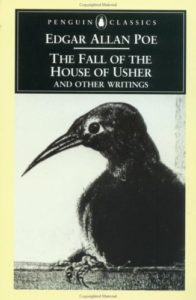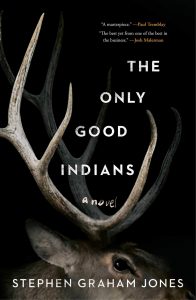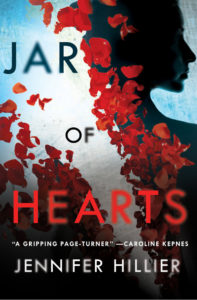One of my favourite scary movies is The Changeling. George C. Scott stars as a famous composer who relocates from New York to a small town after his wife and daughter die in a tragic car accident. Desperate to remove anything from his life that reminds him of his family, he rents a turn-of-the-century Victorian manor. The move is eventless, until he comes across his daughter’s favorite ball; it’s blue and red with a white strip down the middle. He hides it away in a desk and slams the drawer, crippled with grief as he cries himself to sleep. Odd sounds begin that night. At first, he thinks it’s only air in the pipes, but then other strange occurrences continue in the following days. He chooses to ignore them—until the ball reappears. With gritted teeth, he drives to a bridge and throws the ball into the river, screaming in frustration and agony. Drained, but somehow relieved, he returns the house. He freezes inside the foyer as he looks up and sees the ball is poised at the top of the staircase. As if pushed by an invisible hand, it slowly bounces down each step, then rolls to a stop in front of his boots. When he picks it up—it’s wet.
There are no ghouls jumping out from the shadows, no message written in blood. This haunting is simple, existing mostly within the mind, and yet the result is so effective that I still get shivers when I watch it.
I’ve always been drawn to stories that promise a good scare or a gripping mystery. Over the years, my preference has narrowed down to those books that are light on gore and instead rely on a healthy dose of suspense to keep the reader turning the pages. There’s something so satisfying about having the writer purposely let the reader use their imagination to fill in the details. What lurks inside of our minds is often so much worse that anything that could crawl out from the shadows.
I’m intrigued by the subtle art of having the villain (or the monster) present on every page, yet invisible to the eye. I love the space between what the readers knows and what they suspect might be happening. When there’s no way to prove that anything is amiss, yet there’s an intangible unease that sends goosebumps skittering over our flesh—that, my friends, is great suspense!
Why do we enjoy a good scare? Perhaps there’s a certain catharsis in overcoming danger, of knowing you’ll be safe once you reach the end. When we watch a scary movie, or go to a haunted house, we often laugh even as we scream. I wanted to explore the delicate balance between genuine chills and playful delight in my adult debut, A Dreadful Splendor. It’s a gothic murder mystery, but the protagonist, Genevieve, is a con artist who is convinced she is scariest thing in the manor. Her crass yet insightful observations about the estate’s elite residents and staff bring a humorous balance that softens the darker aspects of the novel. Where others might cringe away from the shadows, Genevieve dives in headfirst, certain that she is too smart to fall for the psychological tricks of suspense—until, of course, it becomes impossible to ignore that this haunting might very much be real.
With that in mind, I wanted to list some of the books whose suspenseful elements helped influence A Dreadful Splendor.

Stranger With My Face by Lois Duncan
Lois Duncan was my go-to author growing up. She was the queen of YA paranormal mystery, plus she always wrote such dreamy guys. In this story, Lori is a happy and well-adjusted teen who comes from a loving home. There’s nothing to suggest why all the people she trusts are seeing her doing things around town that she can’t remember. Is she going crazy or is there something buried deep down, that she’s afraid to admit? What I admire most about Duncan’s writing though, was how she uses romance to offset the more tense aspects of the story, thereby creating an effective contrast, which adds another interesting dimension to the suspense.

The Fall of the House of Usher by Edgar Allan Poe
Poe used the setting as not only a reason for the characters to be at the cursed manor itself, but slowly, the manor evolves as a symbolic part of the story. Is it the house that’s making them sick in an organic way or is there a supernatural device at work? The surroundings come alive as they influence the characters’ choices, and even hold them captive. This adds to the building suspense and thereby the setting acts as a significant player in the plot.

Pet Semetary by Stephen King
King says he makes readers care about the characters, and then he releases the monsters. The emotional connection the reader has with the characters directly influences the growing suspense. If the reader doesn’t have an invested interest in the characters, it doesn’t matter how intricate the plot or shocking the twist. Characters should be relatable or at least interesting (especially the villains).
This book explores the power of grief and how it can make people act in a way that they never would otherwise, justifying even the most insane choices. I read this over thirty years ago, but the last line has stayed with me all this time, and still gives me goosebumps.
“Darling,” it said.

The Only Good Indians by Stephen Graham Jones
This book was all consuming and I found myself completely absorbed within the span of a few pages. It’s a classic horror tale in which the characters are somewhat unaware of the true evil at first but begin to sense their impending death. With the accrued knowledge from each subsequent victim in the novel, the dramatic irony allows the readers to know the impending danger for each character as the story progresses. The reader feels helpless, wishing they could reach into the pages and save them. As the energy and pace gain momentum the plot tightens, and the terror is unleashed with surprising speed. The reader has no choice but to witness to the eviscerating climax. Jones does an expert job at balancing the beautiful flow of sentences with the more callus and gruesome nature of revenge.

Velvet Was the Night by Silvia Moreno-Garcia
This novel is a master class in how to write lush and slow burning suspense while pulling on the reader’s heart strings. Told in dual perspectives, this historical mystery is crafted with the beautiful talent Moreno-Garcia brings to all her novels. The two protagonists have blurred morals and somewhat questionable intensions, but they are interestingly likeable enough for the reader to sympathize with. We may not agree with their choices, but we understand their reasoning. While this mystery is heavy on the violence and language of the time and setting, it’s also supported by the charming noir style and the deeply felt loneliness of the main characters.

Ghost Story by Peter Straub
Another aspect of building suspense effectively is with well placed plot twists. Ghost Story is a great example of this technique. Within the mystery there are obstacles to overcome to discover the next clue, but well placed, unexpected twists catch the reader unaware and keep them turning the pages. You think it will be a simple story of revenge from beyond the grave, but the lines blur between villain and hero, and only when you reach the end will you be certain of one thing—that you’ll have trouble sleeping without the lights on.

Jar of Hearts by Jennifer Hillier
Jar of Hearts is a dark psychological thriller with a compulsive pace. Along with the cunning twists, Hillier also manages to create dilemmas that challenge the protagonist to make choices that force them to do something that either conflicts with their ethics or results in a physical or demoralising loss. The protagonist, Georgina, has kept a devastating truth buried for fifteen years, but when a serial killer emerges in her neighborhood, she puts her life at risk to find them before they uncover her deadly secret.

The Spiral Staircase by Ethel Lina White
Lastly, another technique to heighten suspense is to have a ticking time bomb. The Spiral Staircase was brought to television by Hitchcock, seemingly due to the boxes it ticked off for him.
This is a classic, slow building suspense novel complete with an isolated mansion and a stormy night. At its heart is a likeable servant girl trapped in a house with old family secrets while a killer prowls outside looking for an unlocked door. The ticking time bomb in this situation is the worsening storm and the quickly declining health of the elderly patriarch. What does he know that the rest of the family doesn’t?
***


















